
Apple is undoubtedly the most popular fruit, especially in Poland. They have natural growing conditions here, so there are plenty of them in shops and orchards. We value them for their taste and variety, they can be used to prepare sweet and salty dishes as well as preserves. It is worth knowing how good the effect of eating apples is on our health and include them in our daily diet.
An apple is an apple fruit and is fit for consumption. It has a characteristic spherical shape and a flesh which, depending on the variety, may be hard or soft. It has a tough skin that you can eat with the whole fruit or get rid of it. Each apple contains a stone called an apple core.
Experts recommend reaching for the apple especially in autumn and winter, when it has the most value and to naturally strengthen the body’s immunity, which is exposed to seasonal infections. Apples owe their taste to malic and citric acids and sugars that are easily digestible. However, their nutritional value depends on the variety.
Why is it worth eating apples?
Little knowledge often makes us eat apples, discarding its most valuable parts, i.e. the skin and seed nests. Of course, we do not need to start eating the seeds, but it is worth trying unpeeled fruit. The peel of the apple contains huge amounts of pectin, which can cleanse our body of poisonous substances, which is why they are especially recommended for cigarette smokers, people who have contact with harmful substances at work, and residents of polluted cities.
Beneficial pectin’s will “clean up” our body, neutralize toxic substances, and reduce cholesterol absorption, protecting against heart attacks and atherosclerosis. Their beneficial effects also include the regulation of intestinal peristalsis and the prevention of constipation.
Varieties of apples..
There are about 8500 varieties of apples around the world. Of course, not all of them are equally popular. Depending on the type, these fruits differ in color, shape, softness, and taste. Some are sourer while others are exceptionally sweet. Throughout the year, we can find different varieties of apples in shops and bazaars, because most of them are ready to be picked and eaten in a certain season. So, we have typical autumn or summer apples.
Healing properties of apples..
Thanks to their properties, apples have an incredibly positive effect on health. They are recommended for many diseases, but most of all, they support the overall immunity of the body, making it more resistant to pathogenic microorganisms. Eating apples, therefore, actively prevents the development of infection, which is why they are recommended especially in the autumn and winter.
Apples contain many vitamins, but the most important is vitamin C. Most of it is under the skin, so you need to eat apples raw or boiled or baked with the skin. Thanks to this, we will not lose too much of it, although each heat treatment causes a loss of vitamin C. Why do we need vitamin C? It will be useful to everyone because it strengthens the immune system.
The sour taste of apples breaks the sugar content. Despite this, they could deacidify the body because they contain many basic mineral salts. They include potassium and iron among the minerals. These fruits in the diet have a diuretic effect, thanks to which they can reduce leg swelling, and improve liver function, strengthen muscles, heart, and nervous system.
Apples for the joints..
Apples have been used in folk medicine for many years as a remedy for joint pain. When a small child has diarrhea, boiled grated apples will help him, and in adults they are perfect for indigestion and ulcers. Apple peels have medicinal uses. The tea made of them has a disinfecting effect and eliminates inflammation in the mouth and throat. You can also prepare apple cider vinegar yourself. By drinking two teaspoons of it with two teaspoons of honey and half a glass of water, we replenish the potassium in the body and improve digestion. However, apple cider vinegar is not recommended for people with ulcers.
Apples and the digestive system..
Apples have amazing indigestion-fighting properties. In natural medicine, they are used for the feeling of fullness in the stomach, and in the case of diarrhea (however, they must be boiled and grated). Regular consumption of apples also improves the functioning of the intestines and supports metabolism. This is due to dietary fiber, which additionally makes us feel full faster after a meal. Apples also eliminate gas.
Pectin contained in apples supports the proper growth of the bacterial flora. Just one fruit a day is enough to clean the intestines of undigested remains and prevent digestive system diseases (including cancer).
Apples also have the power to relieve heartburn symptoms and eliminate bad breath. Apple cider vinegar, drunk regularly in small amounts, inhibits the development of infections, and thanks to the potassium content, it also supports digestion.
The effect of apples on the heart..
Potassium has another important function in the body. It contributes to the proper functioning of the cardiovascular system. It seals the walls of blood vessels and prevents the accumulation of cholesterol. It also regulates its level in the blood. Eating apples protects us against the development of arterial hypertension, atherosclerosis, and, consequently, also against heart attacks and strokes.
Apples and diabetes..
The pectin’s contained in apples contribute to the regulation of blood sugar levels. So, they are a great snack between meals. Apples also have a relatively low glycemic index, although of course you should not go overboard with them. Diabetics should choose the more acidic varieties with hard and crunchy flesh.
There are also quercetins in apples, which reduce the risk of the so-called diabetic cataracts. However, this only applies to raw apples, which we do not process into juices or preserves.
Apples and weight loss..
Pectin’s also have the miraculous power to remove toxins from the body. They support the removal of heavy metals. Due to the high fiber content, apples have a laxative effect when eaten in excess. For this reason, the so-called weight loss support is very often used. one-day apple detox. Then for one or two days only apples are eaten, in any quantity and form.
Fiber also makes us feel full faster after a meal, thanks to which we eat less during the day and it is easier to keep a beautiful figure for longer. Apples also inhibit the feeling of hunger. Eating apples supports us in the fight for a better figure, but it cannot replace a balanced diet and regular physical activity.
Apples for beauty..
These healthy fruits not only help us lose weight, but also make it easier for the body to absorb calcium. This way, they strengthen nails, hair, and teeth. In addition, hard apples are a good exercise for our gums, which are strengthened by biting. It is worth remembering that after brushing your teeth, you should not eat apples, because the sugar in them promotes cavity.
The vitamin C is also involved in metabolism, ensures a youthful appearance of the skin, and prevents its sagging. Together with vitamin PP, it prevents the formation of subcutaneous exudates and spider veins.
Is an apple with a worm healthier than without?
Most apples are sprinkled multiple times before they reach the store shelf. Contains an average of 42 pesticide residues. At least 7 of them are commonly used and are suspected of contributing to cancer development. 20 of them affect the hormonal balance, 10 are neurotoxins, and 6 of them may have a negative effect on fertility.
Therefore, it is best to choose organic apples or from your own “grandma’s” orchard. The worms give a certain, but not one hundred percent, guarantee that the apple is reasonably healthy.
Can everyone eat apples?
Everything is harmful in excess, but people suffering from irritable bowel syndrome should be especially careful with apples. Although these fruits have a positive effect on the digestive system, the simple sugars they contain (fructose and polyols) can irritate the sensitized stomach walls, causing pain, diarrhea, or constipation. Of course, such people do not have to give up eating apples, but the allowable daily dose that does not make a curve is only a quarter of this fruit.
The exception is apple cider vinegar, which can be consumed without fear of health consequences. On the contrary, people with IBS can even help.
** Interesting Facts About Apples**
- Apples come from Central Asia, where their wild species existed several millennia ago. From Central Asia along the Silk Road, apple seeds found their way to the shores of the Black Sea, spread to Persia and Greece, and reached ancient Rome.
- A medium-sized apple contains only 0.31 g of fat, no cholesterol!
- Depending on the variety, apples are the size of a pea or a small pumpkin.
- There are over 8,000,000 varieties of apples.
- A medium-sized apple tree can produce enough apples to fill 20 boxes weighing 42 kilograms.
- Apple trees belong to the rose family.
- It takes around 36 apples to produce a liter of cider.
- A medium-sized apple has 80 calories.
- Due to the high concentration of boron, apples help to improve memory, concentration, attention, and electrical activity of the brain.
- Even though they are not a rich source of calcium, they are high in boron, which makes bones strong.

- The soluble fiber found in apples, called pectin, helps lower blood cholesterol.
- The average person eats 65 apples a year.
- People knew apples as early as 6500 B.C.E.
- In China, the word “apple” is pronounced “ping”, which also means peace.
- Apples contain 25% air, so they float in the water.
- Most of the antioxidants that benefit health are found in the skin of the fruit.
- squeeze your nostrils so you cannot smell anything. Apple, potato, and onion taste the same. All taste sweet.
- An apple is a spherical, edible fruit belonging to the genus Malus apple tree.
- There are 52 kcal in 100 grams of apples.
- The apple fruit is not stated in the Bible. Adam and Eve ate the fruit of the tree of knowledge.
- the cartilage on the male throat called the Adam’s apple. This is a reference to a piece of apple, the forbidden fruit of the biblical paradise that fell in Adam’s throat.
- Apple is the most popular Polish fruit.
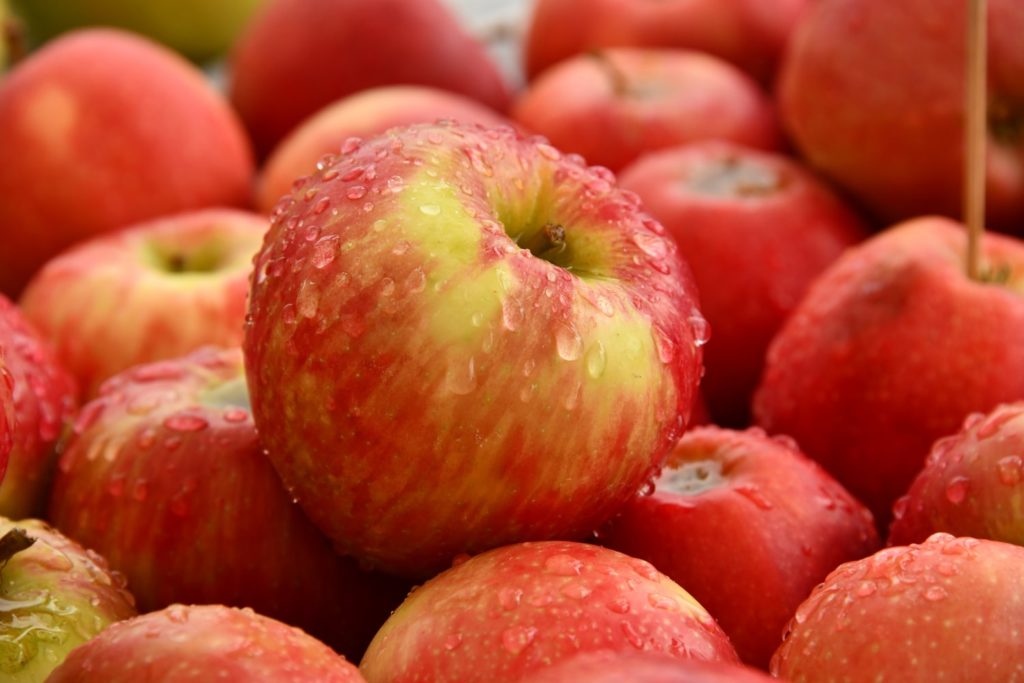
- The apples come from the area of present-day Kazakhstan.
- Apple is considered a symbol of life, health, love, fertility, abundance, immortality, fertility.
- At traditional village weddings, apples were handed out to the bride and groom.
- In ancient Greece it was customary that throwing an apple to someone was a declaration of love.
- In Latin, the word apple “malus / malum” means “bad / bad”.
- Peaches were called Persian apples.
- The falling apple inspired Newton to describe the law of universal gravitation.
- The apple that fell on Newton’s head was of the Flower of Kent species.
- A Hokuto apple that weighed in at 4 lbs. 1 oz. was discovered by Chisato Iwasaki in Hirosaki City, Japan on Oct. 24, 2005, making it the largest apple ever recorded.
- According to Guinness World Records, the largest apple peel was created by Kathy Wafler Madison in Rochester, N.Y. on October 16, 1976. The prize-winning peel was 172 feet 4 inches long.
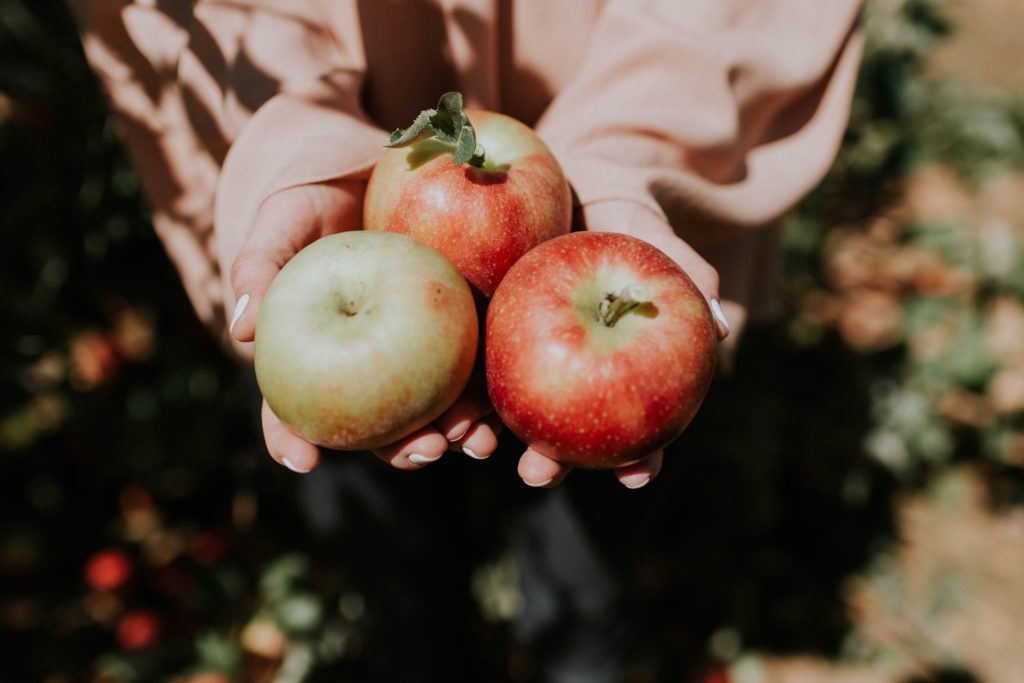
- Danes eat the most apples (per capita). Each year, each of them eats an average of 31 kg of them.
- Annually, more than 85 million tons of apples are produced in the world.
- The largest producer of apples in the world is China (48%).
- Apple trees take 4-5 years to produce their first fruit. A standard size apple tree starts bearing fruit 8-10 years after it is planted. A dwarf tree starts bearing fruit in 3-5 years.
- Apples will ripen six to ten times faster at room temperature than if they were refrigerated.
- It takes about 36 apples to create one gallon of apple cider.
- There are more than 2,500 varieties of apples grown in the United States, and they come in all shades of red, green, and yellow.
- The science of apple growing is called pomology.
- Pilgrims planted the first U.S. apple trees in the Massachusetts Bay Colony.
- Most apple blossoms are pink when they open but gradually transform into white.

- It takes the energy of 50 leaves to produce one apple.
- One of George Washington’s hobbies was pruning his apple trees.
- Most apples are still picked by hand.
- Apple pie is not an American invention and in fact, it is native to Europe. The first apple pie recipe came from England in the 1300’s. But the fun fact is that you were not supposed to eat its crust. Back in the 1300’s, due to lack of a decent tin or container, a utensil made of lard, flour and water was used to make an apple pie but it turned out to be more delicious with that crunchy crust.
- Apples come in all sizes from just a bit bigger than a cherry to about the same size as a grapefruit.
- Apples contain 0 grams of fat or sodium and have no cholesterol.
- At 4 grams per average size apple, they are an excellent source of fiber.
- Apples are members of the rose family.
- Thanks to their high levels of boron, apples can help improve your memory, mental alertness, and electrical activity of the brain.
- The average person eats 65 apples a year.
- Most of the antioxidants found in apples, including quercetin, are in the skin.
- The most popular varieties of apples in the US are the Red Delicious, Golden Delicious, and the Granny Smith.
- The science of growing apples is called pomology.
- Apple trees can live to be about 100 years old.
- In the Chinese culture, the word for apples is pronounced as ‘ping’ which also stands for peace. Therefore, apples are a favorite gift to give when visiting someone in China.
- The average apple has 10 seeds.
- Freshly pressed apple juice immediately turns brown upon contact with air because of oxidation.
- A nifty trick to prevent fresh apple juice from turning brown is to add a few squeezes of lemon juice or lime juice. This helps prevent oxidation.
- Apples are one of the most popular juices taken with breakfast in the United States.
- People who love apples are said to be outspoken, charismatic, and enthusiastic.
- The fear of apples is known as Malusdomesticaphobia. This phobia gets its name from the scientific name of apples, which is Malus domestica in the Rose family (Rosaceae).
- A peck of apples weighs 10.5 pounds. A bushel of apples weighs about 42 pounds.
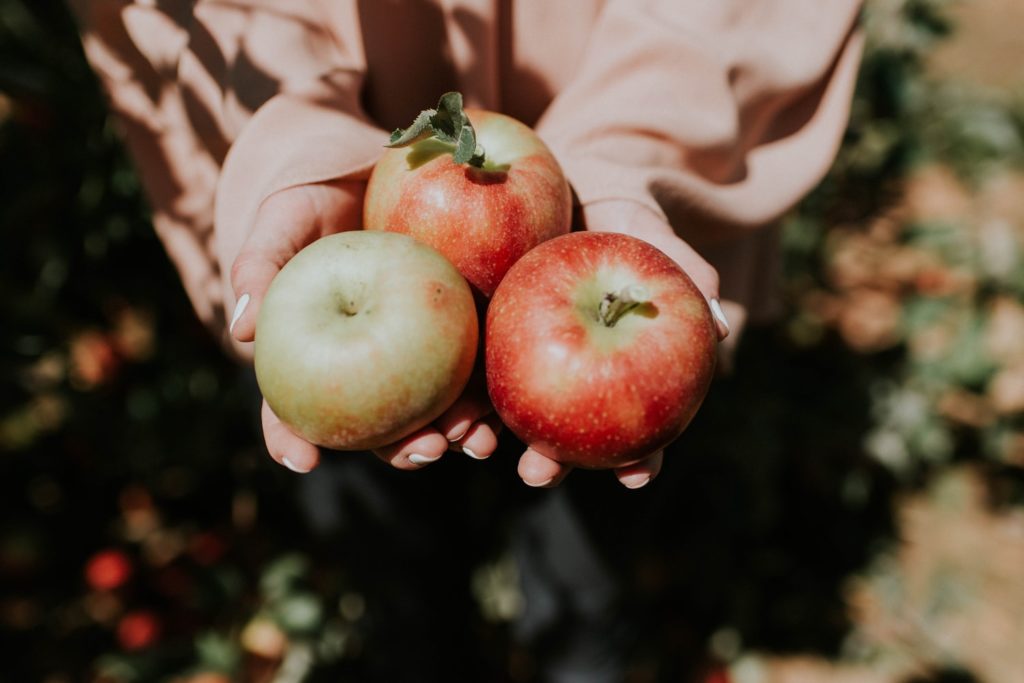
- The top apple producers around the world are China, United States, Turkey, Poland, and Italy. Apples account for 50 percent of international deciduous fruit tree production.
- Apples are full of fiber and can help you feel full on fewer calories – which can ultimately help in weight management. Plus, fiber fights cholesterol and lowers your heart disease risk.
- At last count, more than 7,500 apple varieties have been identified worldwide; more than 2,500 varieties are grown in the United States – 100 of which are grown for commercial sale.
- Apples are grown commercially in 36 states. The top producing states are Washington, New York, Michigan, Pennsylvania, California, and Virginia.
- The top ten varieties produced in the United States are Gala, Red Delicious, Granny Smith, Fuji, Golden Delicious, Honeycrisp, Mcintosh, Rome, Cripps Pink, and Empire.
- Apples are the second most-valuable fruit grown in the United States; oranges are the first. (Source: USDA Economic Research Service)
- Apple juice was one of the earliest prescribed antidepressants.
- Only sour apple trees were native to America before the European settlers brought with them their favorites.

- The pale, lime green Lady apple is one of the oldest varieties of apple still available today. It was originally documented in early Rome (approximately 700 B.C.). It was first referenced as the ‘Lady apple’ in 1628 during the French Renaissance.
- Top producing counties in the world are China, United States, Turkey, Poland, and Italy.
- The largest U.S. apple crop was 277.3 million bushels, harvested in 1998.
- The world’s largest apple peel was created by Kathy Wafler Madison on October 16, 1976, in Rochester, N.Y. It was 172 feet 4 inches long. (She was 16 years old at the time and grew up to be a sales manager for an apple tree nursery.) (Source: Guinness World Records)
- One of George Washington’s hobbies was pruning his apple trees.
- Newton Pippin apples were the first apples exported from America in 1768. Some were sent to Benjamin Franklin in London.
- In 1730, the first apple nursery was opened in Flushing, New York.
- Pilgrims planted the first U.S. apple trees in the Massachusetts Bay Colony.

- Archeologists have found evidence that humans have been enjoying apples since 6500 BC.
- A large-sized apple has about 130 calories.
- Apples are fat-free, sodium-free, and cholesterol-free. And they taste great, too!
- Apples are an excellent source of fiber; one large apple contains 5 grams of fiber, including the soluble fiber pectin.
- Americans eat more apples per capita than any other fruit. According to the USDA Economic Research Service, the average American eats about 16 pounds of fresh apples and 28 pounds of processed apples like juice, cider, or sauce, for a total of about 44 pounds per person per year.

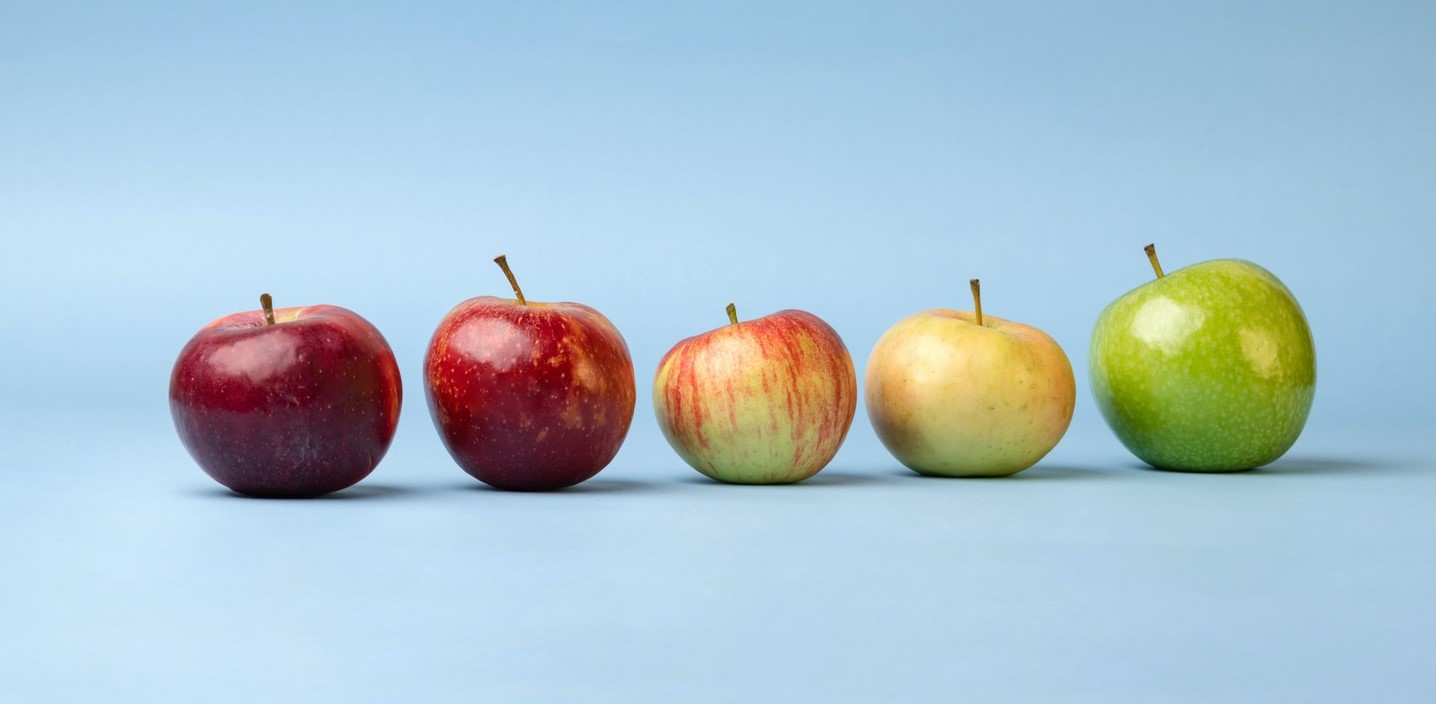

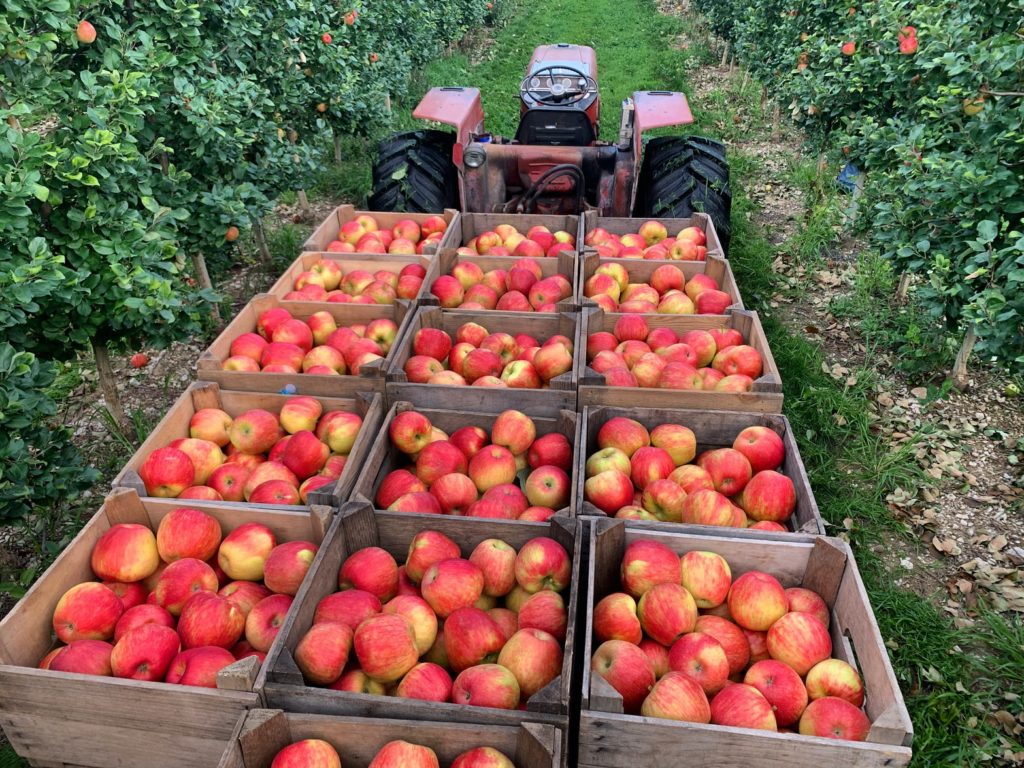



Very informative…keep it up 👍
Thanks for this post amazing content
thank you so much !!!